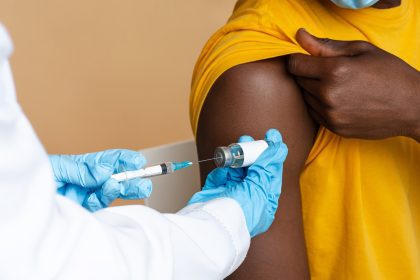The landscape of breast cancer detection has undergone a remarkable transformation in recent years. Moving away from rigid self-examination routines, modern approaches emphasize a more intuitive understanding of breast health. This shift represents a powerful combination of personal awareness and medical expertise, creating a more comprehensive defense against breast cancer.
The power of personal awareness
Traditional breast examinations often followed strict protocols that could feel overwhelming and mechanical. Today’s breast awareness approach encourages a more natural relationship with one’s body. This method promotes ongoing familiarity rather than scheduled checkups, making it easier to notice subtle changes that might otherwise go undetected.
12 essential signs that require attention
- Texture changes in breast tissue that feel different from surrounding areas
- Visible dimpling or puckering of the skin, resembling an orange peel texture
- Unexplained redness or warmth in any area of the breast
- Changes in nipple appearance, including sudden inversion or retraction
- Unusual discharge from the nipple, particularly if it occurs spontaneously
- Persistent pain or discomfort in a specific area of the breast
- Changes in breast size or shape, especially if affecting only one side
- Thickening or hardening of breast tissue that feels different from the rest
- Swelling or tenderness in the armpit area
- Skin changes on the breast surface, including flaking or scaling
- Visible veins becoming more prominent on one breast
- Changes in breast symmetry that develop over time
Mastering comprehensive examination techniques
The modern approach to breast examination combines visual assessment with physical awareness. During daily activities like showering or dressing, individuals can naturally observe their breast tissue without the pressure of formal examination protocols. This casual yet consistent observation often proves more effective than scheduled self-examinations.
Physical awareness extends beyond the breast tissue itself. The entire chest area, including the collarbone region and underarms, deserves attention. Using varying pressure levels helps examine both superficial and deeper tissue layers, creating a complete understanding of what feels normal for each individual.
The science behind early detection
Modern research confirms that combining personal awareness with regular medical screenings significantly improves early detection rates. The breast tissue undergoes natural changes throughout monthly cycles and various life stages. Understanding these normal fluctuations helps distinguish concerning changes from expected variations.
Breast tissue extends beyond the visible breast, reaching into the armpit and up toward the collarbone. This extensive network of tissue requires comprehensive monitoring. Regular awareness of these areas increases the likelihood of detecting changes early when treatment options prove most effective.
Integrating awareness into daily life
Creating sustainable breast awareness habits doesn’t require dramatic lifestyle changes. Simple routines, incorporated naturally into daily activities, prove most effective. Morning routines, such as applying moisturizer or getting dressed, offer perfect opportunities for casual observation without adding stress or complexity to busy schedules.
The role of professional screening
While personal awareness plays a crucial role, professional screening remains essential. Mammograms can detect abnormalities before they become physically apparent. Understanding the complementary nature of personal awareness and professional screening creates a more robust detection strategy.
Different screening recommendations apply to various age groups and risk levels. Working with healthcare providers to establish appropriate screening schedules ensures comprehensive monitoring tailored to individual needs.
Building a prevention-focused lifestyle
Lifestyle choices significantly impact breast health. A diet rich in whole foods, particularly fruits, vegetables, and lean proteins, supports overall health while potentially reducing cancer risks. Regular physical activity not only maintains healthy weight levels but also influences hormone balance and immune system function.
Stress management techniques, including meditation, yoga, or regular exercise, contribute to overall well-being. Adequate sleep allows the body to repair and regenerate, while limiting alcohol consumption and avoiding tobacco use directly reduces cancer risks.
Understanding genetic factors
Family history plays a significant role in breast cancer risk assessment. Knowing your family history helps determine appropriate screening schedules and preventive measures. Genetic counseling might benefit individuals with strong family histories, offering insights into personal risk factors and prevention strategies.
The importance of prompt action
When changes occur, prompt medical evaluation ensures appropriate response. Healthcare providers can determine whether changes warrant further investigation through additional imaging or clinical tests. Early intervention often leads to better outcomes, making timely action crucial.
Creating a support network
Building a support network enhances breast health management. This network might include healthcare providers, family members, and friends who understand and support regular monitoring efforts. Open communication with healthcare providers ensures questions and concerns receive proper attention.
Looking toward the future
Advances in breast cancer detection and treatment continue to improve outcomes. Personal awareness combined with regular medical care creates a strong foundation for early detection. Understanding available resources and staying informed about current recommendations helps individuals maintain optimal breast health strategies.
The impact of environmental factors
Environmental influences on breast health deserve attention. Reducing exposure to harmful chemicals, maintaining healthy living spaces, and making informed choices about personal care products contribute to overall breast health. Understanding these factors helps individuals make informed decisions about their daily habits and environments.












